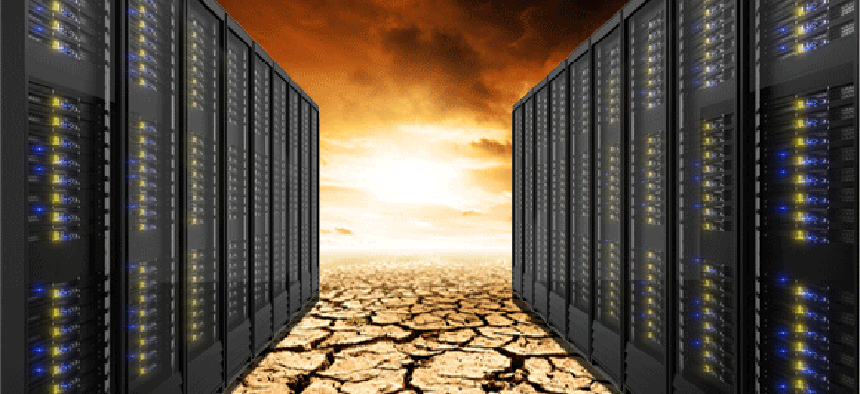3 easy ways to cool data centers

Even if you can't dip your servers in oil or move them outside, there are practical, inexpensive methods you can use to take the heat off.
Data center cooling is becoming a hot topic. In fact, as agencies load up on big data and move to the cloud, more data centers will be coming online, and cooling may become one of the biggest problems to overcome.
Keeping data centers cool isn’t the easiest of tasks. They contain processors with enough heat energy in each one to fry an egg, pumping it out inside a small space. A recent investigation from the New York Times claimed that most data centers were wasting money in electricity and cooling costs. Though many people disputed that claim, cooling is one of the biggest drains on energy in most data centers -- the biggest one beyond feeding the machines power.
The cost of cooling has driven organizations to try some innovative methods that seem to work well, even if some of their techniques are a little extreme.
The Austin Advanced Computer Center made waves by dipping computers into oil to cool them down. The oil pools got hot, but the computers stayed at acceptable operating temperatures. The Royal Institute of Technology in Stockholm does something similar with water, and then it uses that heat to warm up an entire complex of buildings at their facility.
Microsoft is going even further, building a data center that is mostly outside, with servers sitting in what is pretty much advanced shipping containers. That solution depends on a moderate climate, though Microsoft thinks it will work at its new facility in Virginia, where the summers can be brutal.
A more traditional approach was taken by Google, which kept its data center cooling layouts a secret until very recently. One of the things Google does is strip down its servers to bare metal. It also runs cooling lines running right beside most servers and uses curtains instead of walls. The sparsely "furnished" data centers apparently save money over traditional designs.
Public-sector agencies can take lessons from all of these examples as they try to improve efficiency in their own data centers. But each of those is a bit on the extreme side. There are easier, less costly steps that can be taken right now. Jeff Clark, writing for the Data Center Journal, recently released a list of seven tips that almost any data center can follow to help lower cooling costs. Many of the suggestions are quite reasonable. Here are some thoughts on three of Clark's suggestions.
1. Managing floor space
Clark suggests reducing the floor space. With the move to the cloud, servers may be moving to someone else’s data center. If that leaves an open space locally, wall it off to negate cooling needs. Or follow Google’s lead and simply hang curtains in that area? They could block the cool air in but save the space if the data center ever needs to expand again.
2. Liquid cooling — on the inside
Another suggestion is liquid cooling, though Clark advocates a solution like that used in Austin and Stockholm, where entire systems are submerged. Perhaps a better plan would be to water-cool individual processors? Two of the most powerful computers we’ve seen in at GCN, the Tiki from Falcon Northwest and the Genesis Pro from Origin PC both had surprisingly efficient liquid cooling components.
3. Combing the infrastructure
Efficiencies might also be gained by infrastructure modeling. Basically that means looking hard at all the cracks and corners of the data center and finding out where the hot spots are. Perhaps adding a curtain or moving a server from one rack to another can result in a much more efficient operation. To reduce costs associated with that type of monitoring and modeling, consider some of the small data sensors like the new HOBO models that can help track the temperature in the data center.
The point of Clark's Journal article is that, while huge steps can radically enhance cooling, smaller steps might be a good interim solution with a high return on investment. Working efficiently with the tools at hand is always sound advice. Just move those ideas into the data center and start making a difference.





